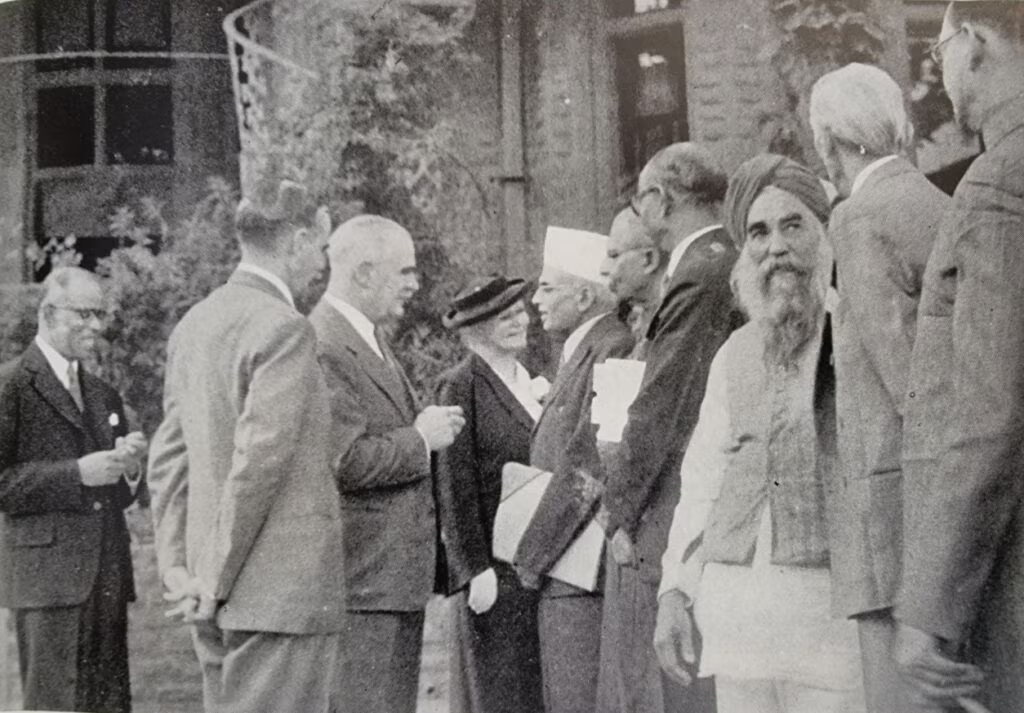Wavell Plan and the Shimla Conference: A Failed Attempt at Political Consensus
History Indian HistoryPosted by NewAdmin on 2025-02-13 08:48:04 |
Share: Facebook | Twitter | Whatsapp | Linkedin Visits: 11

The Wavell Plan was announced during the Shimla Conference, which took place in June and July 1945. It was an initiative by the British government, led by the then Viceroy of India, Lord Wavell, to resolve the ongoing political deadlock and facilitate Indian self-governance. The main objective of the plan was to introduce a new executive council in British India that would have a majority of Indian members, thereby giving Indians more control over their administration while keeping India within British dominion.
The Shimla Conference was convened on June 25, 1945, at the Viceregal Lodge in Shimla, with representatives from the Indian National Congress and the All India Muslim League. The British government hoped that by involving both major political groups in the decision-making process, a stable framework for governance could be established. According to the Wavell Plan, all members of the new executive council, except the Viceroy and the Commander-in-Chief, would be Indian leaders nominated from different communities. The council would be responsible for governing India, but defense and foreign affairs would remain under British control.
Despite its intentions, the Wavell Plan faced major obstacles and ultimately failed. The primary reason for its failure was the disagreement between the Indian National Congress and the Muslim League. The Congress, led by Jawaharlal Nehru and Maulana Azad, wanted representation based on merit rather than religious identity, while the Muslim League, under Muhammad Ali Jinnah, insisted on being the sole representative of Indian Muslims. Jinnah demanded that only League-nominated Muslims should be included in the executive council, a condition that the Congress rejected.
As the two parties failed to reach a consensus, the Shimla Conference ended in a deadlock on July 14, 1945. The failure of the Wavell Plan was a significant moment in India’s political history, as it highlighted the deep divisions between the Congress and the Muslim League, further strengthening the demand for Pakistan. It also exposed the limitations of British efforts to mediate between the two major political groups.
The unsuccessful outcome of the Shimla Conference led to increased tensions and set the stage for the subsequent Cabinet Mission of 1946. While the Wavell Plan did not bring any immediate political resolution, it played a crucial role in shaping the events that eventually led to India's independence in 1947.
Search
Categories
- Sports
- Business
- History
- Politics
- International
- Science & Technology
- Social Issues
- Disaster Management
- Current Affairs
- Education
- Startup Business
- Startup News
- Awards
- Community Services
- Fundraising Events
- Volunteer Services
- Health Initiatives
- Innovations and Initiatives
- In News
- dummybanners
- Awards
- Partners
- Products
- Press Releases
- News
- Fast Check
- South
- సినిమా
- Gallery
- Sunday Chronicle
- Hyderabad Chronicle
- లైఫ్ స్టైల్
- National
- క్రైం
- ట్రెండింగ్
- జాబ్స్
- అంతర్జాతీయo
- బిజినెస్
- రాజకీయం
- బిజినెస్
- సంపాదకీయం
- నవ్య
- చిత్ర జ్యోతి
- క్రీడలు
- జాతీయం
- తెలంగాణ
- తాజా వార్తలు
- మన పార్టీ
- మన నాయకత్వం
- మన విజయాలు
- డౌన్లోడ్స్
- మీడియా వనరులు
- కార్యకర్తలు
- North East Skill Center News
- Government Schemes
- Entrepreneurship Support
- Employment Opportunities
- Skill Training Programs
- Departments
- Investments
- Initiatives
- Resources
- Telangana IT Parks
- Events & Jobs
- Press Releases
- News
- Airport News
- Newtons Laws of Motion
- Karbonn in Business
- Investments in Karbonn
- Company quarterly sales
- Markets
- Auto News
- Industry
- Money
- Advertisements
- Stock target
- Company Updates
- Stock Market
- Company Sales
- Staffing and HR
- Constituency Assembly
- General News
- Srikalahasti Temple
- Bojjala Sudhir Reddy
- Technology & Innovation
- Sports
- Business
- Products
- Industries
- Services & Trainings
- Tools & Resources
- Technology Integration
- Drug Seizures & Arrests
- Telangana Narcotics
- Law & Enforcement
- Rehabilitation
- Nationwide Drug Policing
- Nigeria Seizures
- Global Operations
- Drug Awareness
- Drug Enforcement Tech
- NCB Drug Seizures
- Judicial Crackdown
- India's Surveillance Tools
- Cross-Border Links
- Women Safety
- Cyber Crimes
- Drug Abuse
- Traffic & Road Safety
- Community Connect
- Public Safety Alerts
- Citizen Assistance
- Nellore City News
- Politics & Administration
- Events & Festivals
- Agriculture & Rural
- Business & Economy
- Health & Wellness
Recent News
- Former Vice President Jagdeep Dhankhar Not Yet Requested Official Residence Retainment
- Mopping Up Operations In Lok Sabha, Speaker Om Birla Calls For Introspection
- Last-minute disruptions mark final day of parliament's monsoon session
- Market regulator SEBI plans to extend equity derivatives tenure
- Stock Picks for February: YES Securities & Sharekhan Optimistic About These 5 Companies
- Ban On Real-Money Gaming: 45 Million People Lose Rs 20,000 Crore Each Year, Says Report
- From Porn To Cricket: How Garth Stirrat Rebounds From An Unorthodox Start
- Rift In Saaniya Chandhok's Family? Grandfather Accuses Son of Forgery And Fraud